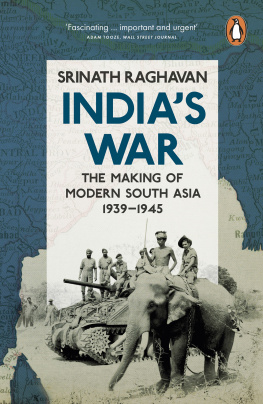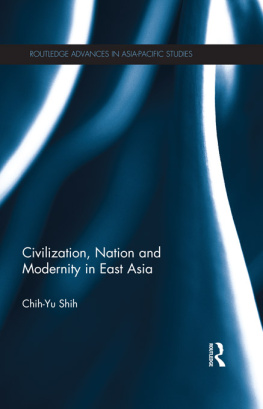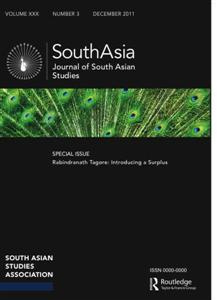ABOUT THE AUTHOR
David Ludden is Professor of Political Economy and Globalization in the History Department at New York University. His research concerns histories of development and globalization and India and South Asia: A Short History represents one aspect of his effort to foster interdisciplinary research on South Asia and globalization.
INDIA
AND SOUTH ASIA
A SHORT HISTORY
DAVID LUDDEN
A Oneworld Book
First published by Oneworld Publications 2002
Reprinted 2005, 2007
This edition published in 2014
Copyright David Ludden 2002, 2014
The moral right of David Ludden to be identified as the Author of this work has been asserted by him in accordance with the Copyright, Designs, and Patents Act 1988.
All rights reserved
Copyright under Berne Convention
A CIP record for this title is available from the British Library
ISBN 978-1-85168-936-1
eBook ISBN 978-1-78074-108-6
Oneworld Publications
10 Bloomsbury Street
London WC1B 3SR
England
Stay up to date with the latest books, special offers and exclusive content from Oneworld with our monthly newsletter
Sign up on our website
www.oneworld-publications.com
For Mohona Sara Siddiqi
Contents
I finished writing the first edition of this book not long before 11 September 2001, which now seems very long ago. Scholars then rarely thought of Afghanistan as being an integral part of contemporary South Asia, let alone as a theatre of war affecting politics and societies across the region. Few scholars thought of Maoist rebels as being significant in South Asia. Ethnic war seemed endless in Sri Lanka, Hindutva ruled New Delhi, and Pakistan seemed to be a permanent military state. The Maldives were not yet drowning. Climate change did not seem to threaten Bhutan or Bangladesh. Global media, finance, trade, and labour mobility attracted little attention. These are but a few indications of how dramatically the huge part of the world discussed in this book has changed since 2001.
Today, what came to be called globalization during the 1990s has affected everyday life in various ways in every corner of South Asia, and history looks different today, not only because it has more recent chapters, but also because ideas about history have changed. Most notably, history can no longer be contained inside maps of national states. The Country Profiles that concluded the first edition of this book now appear sadly archaic, not only in their factual content but also in their conceptualization. The final chapters of this edition endeavour to weave together national histories with transnational trends that now affect all of the countries in the region.
Every chapter has been revised for this new edition to reflect some of the impact of new scholarship and changing orientations toward history over the very long term. A short text like this can never do justice to the ever-growing wealth of new scholarship which has revealed, for instance, that Indus Valley cultures were much more expansive than was previously known; that ancient, medieval, and early-modern societies were likewise more complex, diverse, and interconnected; and that pre-modern South Asia as a whole was more deeply and broadly connected to wider Eurasian trends, creating many EastWest parallels. Scholars have now woven colonial history into post-colonial theory and vastly increased the scale and sophistication of research on gender, the environment, law, under-represented social groups, and many other subjects. I have presented some of this new knowledge in the text and in Selected Readings.
I have continued the old practice of using the names of contemporary political territories, cities, and regions to locate events throughout history. But I now flag the novelty of our current cultural scene by using new place names in the last chapters, notably for cities formerly known as Madras, Bombay, Calcutta, Baroda, and Trivandrum, and for the region formerly known as Orissa. I have used a slightly modified thematic scheme in the book as a whole, which is described in the Introduction. There is now a blog for updates, feedback, and conversations: http://southasiahistory.blogspot.com/. I am grateful to Sapana Gandhi and Sabina Panday for able research assistance.
Some of the original Preface and cover text is no longer accurate, because I have moved from the University of Pennsylvania to New York University, but original Acknowledgements still pertain. I have used ideas and information from many people. I want to thank the following people by name without implicating them in any errors of fact or interpretation that remain in the text. In no particular order, they are: Muzaffar Alam, G. Aloysius, Romila Thapar, Binay Bhushan Chaudhuri, Dharma Kumar, Amiya Kumar Bagchi, Ashok Rudra, Irfan Habib, Neeladri Bhattacharya, Bina Agarwal, Amartya Sen, M. S. S. Pandian, Gail Omvedt, Sheldon Pollock, A. R. Desai, Sanjay Subrahmanyam, Bernard S. Cohn, Sumit Guha, Dina Mahnaz Siddiqi, Sugata Bose, Ayesha Jalal, David Washbrook, Richard Eaton, Gyanendra Pandey, Sandria Freitag, Carol Breckenridge, Nicholas B. Dirks, Christopher Bayly, Christopher Baker, Anand Yang, Michelle Maskiell, Barbara Metcalf, Gyan Prakash, Brian Caton, Robert Nichols, Vivek Bhandari, Sanjay Joshi, and Savita Nair.
Thanks also to David Nelson for his constant bibliographic assistance; and to Jeremie Dufault, Teresa Watts, Linda Oh, Sue Yi, Richard Mo, Anna Cullotti, and Vivek Arora for their help on various phases of this project. Lori Uscher merits special thanks for her detailed reading, perceptive comments, and insightful suggestions. The editorial staff at Oneworld Publications have been steadfast throughout, and I appreciate all their hard work, patience, and encouragement.
T his survey of history concerns the world region that now includes Afghanistan, Bangladesh, Bhutan, India, the Maldives, Nepal, Pakistan, and Sri Lanka. I follow convention by using politics and state territory to describe geography and chronology, but my central concern is social change, including its economic, political, and cultural dimensions. To introduce the very long-term history of social change in South Asia, I focus on the mobility of people, ideas, and other important elements in social life and on human territorial attachments that give culture and politics spatial form. Each chapter focuses on innovations in each historical period that affect people in everyday life, and condition their production and reproduction of social identities.
Each chapter draws connections between large-scale trends in the wider world and patterns of change in South Asias many regions and countless localities, where disparate histories unfold and no one set of peoples or places typifies history as a whole. The book pays close attention to spatial diversity, so that rather than telling one single story, it presents a series of strategic simplifications to sketch mosaic contours of history. My goal is to establish a reliable historical starting point for further study, providing a useful framework for organizing an ever-increasing flood of new factual information. My starting point for thinking about the past is rooted emphatically in the present: this book seeks to make history useful in the present, when South Asia, like Asia as a whole, is subject to radical transformation. Global identities are emerging today in South Asia that are as novel, world-making, and trendsetting as anti-colonial national identities were when they hit the streets in South Asia more than a century ago.








